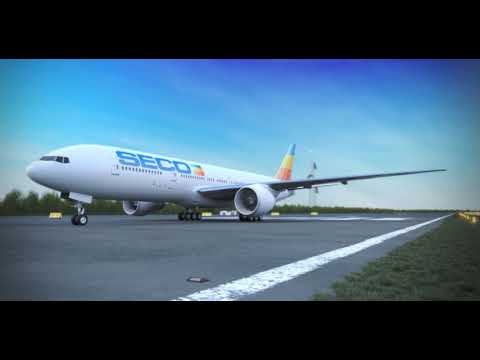Paths to Green
Airlines stand in the face of mounting environmental criticism – the introduction of emissions taxations, and ever-increasingly ‘green-conscious’ travellers – so are electric planes the future of air travel?
Airlines stand in the face of mounting environmental criticism – the introduction of emissions taxations, and ever-increasingly ‘green-conscious’ travellers – so are electric planes the future of air travel?
The date is October 21, 1973. Aviation pioneer Heino Brditschka has just completed a 10-minute flight over an airfield near Linz, Austria. It is the first recorded flight in an electric aircraft. The flight took place at the height of the 1973 oil crisis, and there was hope then that Brditschka might be heralding a new era of aviation.
Flash forward over 45 years to 2019, facing the same reliance on unstable oil supplies and the growing environmental question, there is renewed hope in the future of electric aircraft. In May 2019, SAS and Airbus announced they are working together to build knowledge on the opportunities and challenges involved in introducing hybrid and electric commercial aircraft.
In a press release, Rickard Gustafson, CEO at SAS, stated “We are proud of our ambitious sustainability work and are now pleased that Airbus has chosen SAS to partner with for this future project. If this becomes a reality, it will revolutionize emissions.” This isn’t the first major environmental commitment made by SAS. It aims to cut 25 percent of emissions by 2030, achieved through modernization and the increased use of biofuels.
In January 2019, UK-based Rolls-Royce also announced it had a team developing a zero-emissions electric aircraft capable of over 450km/h, using the ‘most powerful battery ever built for flight’. Whilst battery power would seem like the logical solution to store the required energy, this in itself presents a whole series of new challenges.
Prototype electric aircraft hold no more than four passengers, a whole world away from kerosene-fueled commercial flights carrying upwards of 150 people and all that luggage. The challenge isn’t simply the size of the battery or energy storage either, but the reliability crucially required to ensure flight-critical systems are powered at all times. Not to mention charging times and dealing with the enormous heat generated by batteries of the required size.
But there are solutions. Smaller aircraft, with lower passenger capacities, would reduce energy requirements. They would also be quieter, lighter and able to use shorter runways, potentially leading to cheaper ticket prices — likely to incentivize airlines to develop this new technology.
Looking ahead, London’s Heathrow airport expects to see electric aircraft in operation by 2030, offering to waive landing fees of operators for their first year. In July 2018, Norway’s transport minister announced a commitment to use electric aircraft for all short-haul domestic flights by 2040— the country is ideal due to the number of small airports and short routes used to navigate its tricky terrain.
With many big players already working to deploy the first commercial electric aircraft, it seems as if Brditschka’s dream may finally become reality as the green revolution reaches the aviation sector. In the course of the next few decades, we might all begin to enjoy cleaner, quieter, cheaper and more readily available air travel.
Previously Featured in SECO Tools' EDGE Magazine.
SECO works closely with aerospace manufacturers to provide solutions that increase productivity and bolster profitability. In this short video below, SECO demonstrates how they help create many of the components during the manufacturing of an aircraft.

There are already over 100 projects working to get electric (or hybrid) aircraft off the ground. These include:
In October 2018, UK budget airline giant EasyJet announced it had progressed the development of a nine-seat electric aircraft, to be deployed by the end of 2020
Boeing successfully tested its two-seat autonomous vertical take-off and landing (VTOL) electric aircraft prototype in January 2019
Seattle-based Zunum Aero intends to launch their 12-seat electric aircraft in 2022, and a 50-seater by 2027
Slovenia’s Pipistrel is developing a 19-seat “hybrid fuel cell commuter aircraft,” which they want to see in our skies by 2025
French-owned Airbus wants its 100-seat commercial hybrid aircraft flying by 2030
Cleansky2 is a Swedish research project financed by EU's Horizon 2020 program, developing hybrid solutions aimed to be in use by 2050
Seco Tools is your complete metalworking solutions provider offering cutting-edge, precision tools for indexable milling, solid milling, hole making, turning, threading, grooving and more. We’re proud to make for makers, invent for inventors, and partner with pioneers. In short - if the right tool for the job exists, we’ll deliver it. If it doesn’t, we’ll create it.
